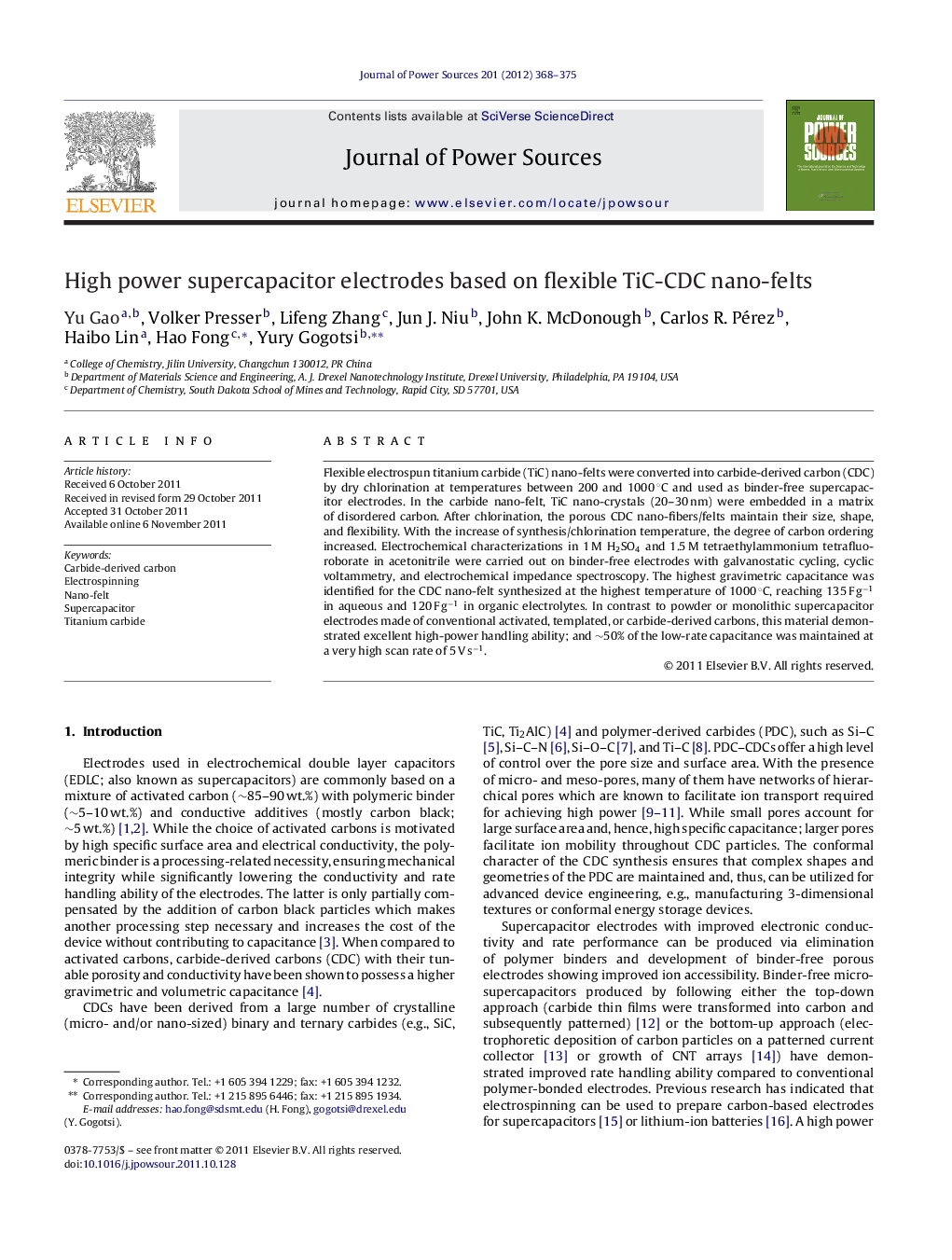| Article ID | Journal | Published Year | Pages | File Type |
|---|---|---|---|---|
| 1293213 | Journal of Power Sources | 2012 | 8 Pages |
Flexible electrospun titanium carbide (TiC) nano-felts were converted into carbide-derived carbon (CDC) by dry chlorination at temperatures between 200 and 1000 °C and used as binder-free supercapacitor electrodes. In the carbide nano-felt, TiC nano-crystals (20–30 nm) were embedded in a matrix of disordered carbon. After chlorination, the porous CDC nano-fibers/felts maintain their size, shape, and flexibility. With the increase of synthesis/chlorination temperature, the degree of carbon ordering increased. Electrochemical characterizations in 1 M H2SO4 and 1.5 M tetraethylammonium tetrafluoroborate in acetonitrile were carried out on binder-free electrodes with galvanostatic cycling, cyclic voltammetry, and electrochemical impedance spectroscopy. The highest gravimetric capacitance was identified for the CDC nano-felt synthesized at the highest temperature of 1000 °C, reaching 135 F g−1 in aqueous and 120 F g−1 in organic electrolytes. In contrast to powder or monolithic supercapacitor electrodes made of conventional activated, templated, or carbide-derived carbons, this material demonstrated excellent high-power handling ability; and ∼50% of the low-rate capacitance was maintained at a very high scan rate of 5 V s−1.
► Electrospun carbon TiC nano-felts can be used as binder-free supercapcitor electrodes. ► Capacitance scales with synthesis temperature (max: 135 F g−1 in H2SO4). ► Very high rate handling ability in aqueous and organic electrolytes.
